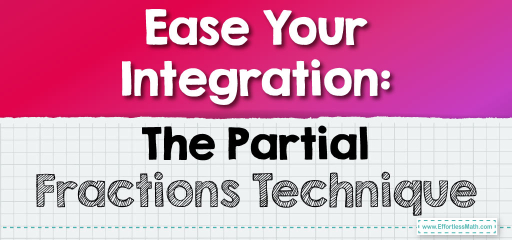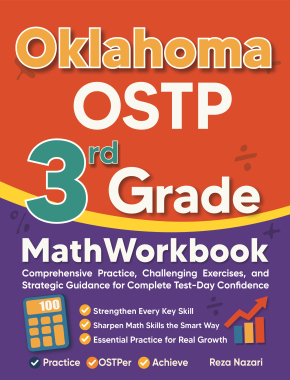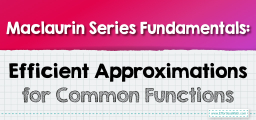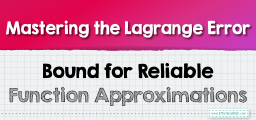Ease Your Integration: The Partial Fractions Technique
Partial fraction decomposition is a powerful technique in calculus for simplifying the integration of rational functions. By breaking down a complex fraction into a sum of simpler fractions, this method transforms challenging integrals into more manageable ones. Especially useful when dealing with polynomial denominators, partial fractions make it possible to apply straightforward integration rules. This approach not only facilitates the calculation of integrals but also enhances understanding of complex algebraic expressions. It’s a staple in mathematical analysis, proving invaluable in solving differential equations and evaluating definite integrals in physics and engineering applications.
[include_netrun_products_block from-products="product/6-south-carolina-sc-ready-grade-3-math-practice-tests/" product-list-class="bundle-products float-left" product-item-class="float-left" product-item-image-container-class="p-0 float-left" product-item-image-container-size="col-2" product-item-image-container-custom-style="" product-item-container-size="" product-item-add-to-cart-class="btn-accent btn-purchase-ajax" product-item-button-custom-url="{url}/?ajax-add-to-cart={id}" product-item-button-custom-url-if-not-salable="{productUrl} product-item-container-class="" product-item-element-order="image,title,purchase,price" product-item-title-size="" product-item-title-wrapper-size="col-10" product-item-title-tag="h3" product-item-title-class="mt-0" product-item-title-wrapper-class="float-left pr-0" product-item-price-size="" product-item-purchase-size="" product-item-purchase-wrapper-size="" product-item-price-wrapper-class="pr-0 float-left" product-item-price-wrapper-size="col-10" product-item-read-more-text="" product-item-add-to-cart-text="" product-item-add-to-cart-custom-attribute="title='Purchase this book with single click'" product-item-thumbnail-size="290-380" show-details="false" show-excerpt="false" paginate="false" lazy-load="true"] [include_netrun_products_block from-products="product/6-south-carolina-sc-ready-grade-3-math-practice-tests/" product-list-class="bundle-products float-left" product-item-class="float-left" product-item-image-container-class="p-0 float-left" product-item-image-container-size="col-2" product-item-image-container-custom-style="" product-item-container-size="" product-item-add-to-cart-class="btn-accent btn-purchase-ajax" product-item-button-custom-url="{url}/?ajax-add-to-cart={id}" product-item-button-custom-url-if-not-salable="{productUrl} product-item-container-class="" product-item-element-order="image,title,purchase,price" product-item-title-size="" product-item-title-wrapper-size="col-10" product-item-title-tag="h3" product-item-title-class="mt-0" product-item-title-wrapper-class="float-left pr-0" product-item-price-size="" product-item-purchase-size="" product-item-purchase-wrapper-size="" product-item-price-wrapper-class="pr-0 float-left" product-item-price-wrapper-size="col-10" product-item-read-more-text="" product-item-add-to-cart-text="" product-item-add-to-cart-custom-attribute="title='Purchase this book with single click'" product-item-thumbnail-size="290-380" show-details="false" show-excerpt="false" paginate="false" lazy-load="true"]

Adopting partial fraction decomposition elevates problem-solving efficiency in calculus, offering a clear pathway through intricate algebraic terrains. It unravels the intricacies of polynomial equations, allowing for elegant solutions to otherwise daunting integrals. Beyond mere computation, this technique enriches conceptual grasp, bridging gaps between algebra and calculus. It’s instrumental in signal processing, control systems, and electrical engineering, where it aids in Laplace transform analyses and circuit design, highlighting its interdisciplinary significance.
To perform partial fraction decomposition and use it for integral calculation, we follow a systematic approach. Let’s demonstrate this with a generic example where we have a rational function \( \frac{P(x)}{Q(x)} \), and \( Q(x) \) is factorable into linear and/or irreducible quadratic factors.
Step 1: Factor the Denominator
First, factor \( Q(x) \) into its irreducible components. For instance,
\( Q(x) = (x – a)(x – b)^2(x^2 + bx + c) \)
Step 2: Set Up Partial Fractions
Next, set up the partial fraction decomposition based on the factors of \( Q(x) \). Each factor gets its own term\(s\):
\( \frac{P(x)}{Q(x)} = \frac{A}{x – a} + \frac{B}{(x – b)^2} + \frac{C}{x – b} + \frac{Dx + E}{x^2 + bx + c} \)
Step 3: Multiply by the Common Denominator
Multiply both sides by \( Q(x) \) to clear the denominators:
\( P(x) = A(x – b)^2(x^2 + bx + c) + B(x – a)(x^2 + bx + c) + C(x – a)(x – b)(x^2 + bx + c) + (Dx + E)(x – a)(x – b)^2 \)
Step 4: Solve for Coefficients
Expand and simplify the equation to match coefficients on both sides or substitute convenient values of \( x \) to solve for \( A, B, C, D, \) and \( E \).
Step 5: Integrate
Once you’ve determined the coefficients, integrate each term separately:
\( \int \frac{A}{x – a} dx + \int \frac{B}{(x – b)^2} dx + \int \frac{C}{x – b} dx + \int \frac{Dx + E}{x^2 + bx + c} dx \)
Step 6: Apply Integration Techniques
Use basic integration techniques for each term. For example:
- \( \int \frac{A}{x – a} dx = A \ln|x – a| + C \)
- For irreducible quadratic forms, use substitution or trigonometric identities if necessary.
This method systematically deconstructs complex rational functions into simpler, integrable forms, leveraging algebraic manipulation and integration skills to solve integrals that would otherwise be challenging.
Related to This Article
More math articles
- 4th Grade Common Core Math Practice Test Questions
- The Crucial Role of Mathematics in Engineering Education
- Number Properties Puzzle – Challenge 8
- Number Properties Puzzle – Challenge 14
- How to Estimate Products of Mixed Numbers
- How to Multiply a Matrix by a Scalar?
- DAT Math Formulas
- 10 Most Common 5th Grade MEAP Math Questions
- Bеѕt Grарhing Cаlсulаtоrѕ for Math Tеасhеrѕ
- What Kind of Math Is on the PSAT/NMSQT Test?


























What people say about "Ease Your Integration: The Partial Fractions Technique - Effortless Math: We Help Students Learn to LOVE Mathematics"?
No one replied yet.